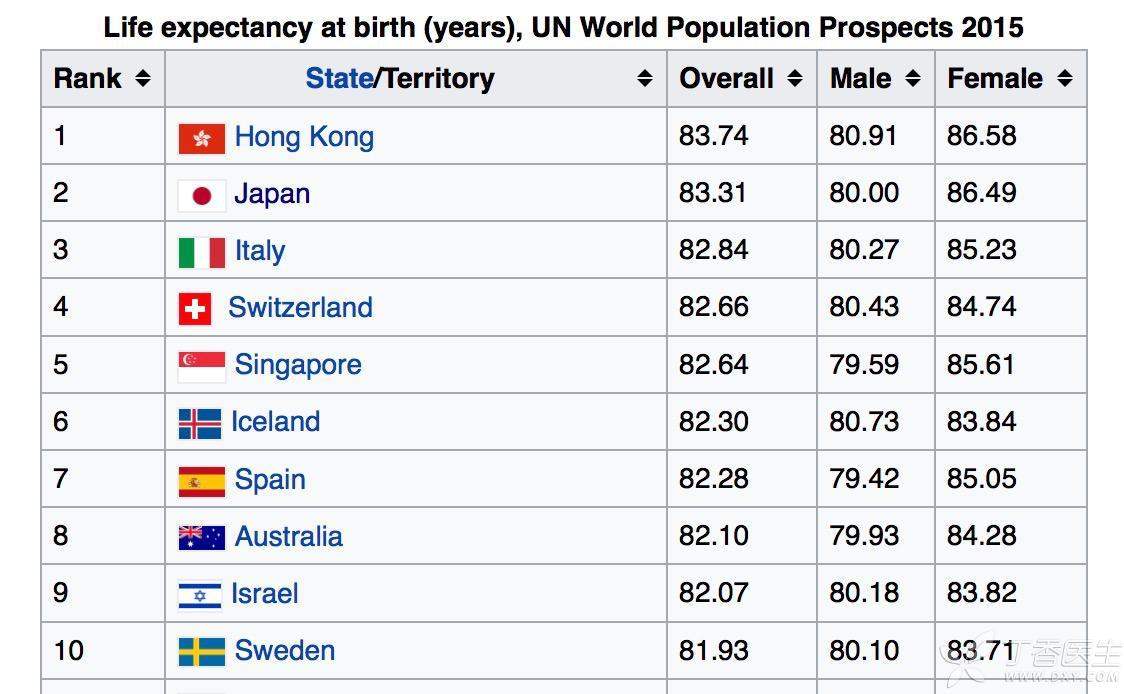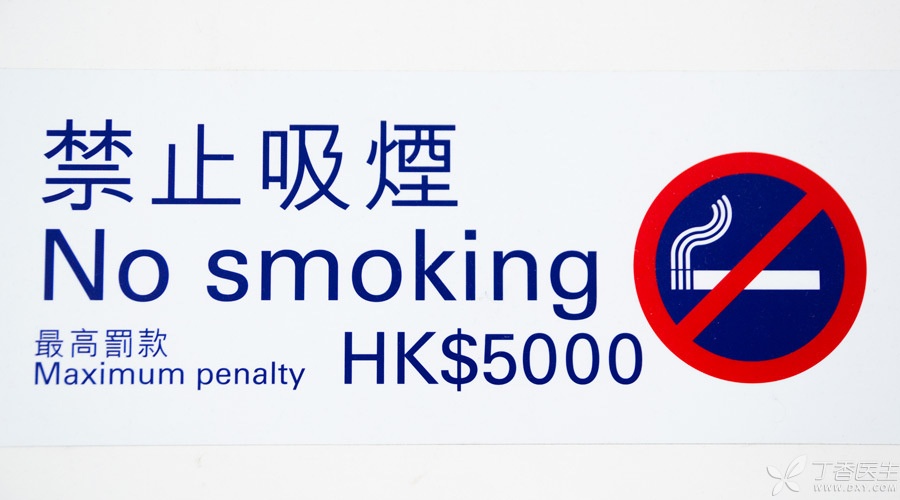
On the 20th anniversary of Hong Kong’s return to China, Dr. Clove also came to talk about Hong Kong.
Generally speaking, when it comes to [longevity], it is easy for everyone to think of Japan first, believing that Japan has the longest life expectancy in the world.
However, according to the statistics of 2015, the country (or region) with the longest life expectancy in the world is actually Hong Kong, China.
In 2015, Hong Kong’s average life expectancy was 83.74 years, including 80.91 years for men and 86.58 years for women, ranking first in the world for both men and women.
Here, I would like to explain [life expectancy per capita], which is different from the actual life expectancy of human beings. It is calculated on the basis of the current mortality rate and estimates the age that can be lived to without accidents from birth.

The average life expectancy in mainland China is 75.43 years, ranking 71st.
Surprised or not? Not surprisingly?
In everyone’s eyes, Hong Kong is clearly a place with a very fast pace of life and great work pressure, and its living environment is not as good as that of many cities in the Mainland.
Then why is it that the average life expectancy of Hong Kong people is so long?
Strong economic conditions
As we all know, Hong Kong’s economy is highly developed. In 2015, Hong Kong’s GDP per capita was 42,000 US dollars, ranking 14th in the world and 3rd in Asia, while Macao and Singapore were the top two.
According to a study published in 1975 by demographer Samuel Preston:
There is an obvious positive correlation between economic income and life expectancy. People living in rich countries (or regions) live longer than people in relatively poor areas.
To put it simply and roughly (some cruelty) is…
The richer you are,
The longer you live.
Data show that the poorer the area, the greater the threat of crime, alcohol abuse and infectious diseases, the poorer the medical conditions, and the life expectancy is usually difficult to reach even the national average.
Improving the public health environment, establishing a sound disease prevention and control system, training excellent medical personnel, and carrying out health science education for ordinary people all the year round require a large amount of money investment.
However, for some low-income countries (or regions), a slight improvement in the economy may greatly increase their life expectancy.
It can be seen from this that some [long-lived old people’s villages] in remote mountainous areas, which often appear in stalls literature and health public numbers, are basically bullshit.
But in fact, not all people in rich countries live long.
For example, one country is an exception, with a very high GDP per capita and a life expectancy of over 30.

It is America.
The United States has the world’s top medical research. The latest drugs are often listed in the United States for the first time. The government also spends the most money on medicine every year in all countries.
However, in 2015, the average life expectancy in the United States was 79.3 years, ranking 31st in the world, on a par with Cuba and Costa Rica.
This is probably because, in addition to economic factors, another important factor to improve life expectancy per capita…
Good living habits
For developed countries or regions, the average life expectancy has been less and less affected by wars and virulent infectious diseases.
Whether it is weight control or smoking ban, reasonable exercise, low-salt and healthy diet, etc., a number of public measures have been introduced from the government level to improve the health status of the general public.
Obesity is the biggest health threat to Americans. Heart disease, diabetes, hypertension and some osteoarthropathy are all closely related to obesity, and these chronic diseases will significantly affect the quality of life and reduce the life expectancy per capita.
Most Hong Kong people are relatively thin.
Influenced by diet structure and ethnic factors, the people in the whole East Asian region are relatively thin and have good advantages.
However, I have to admit that… [gourmet capital] is very dangerous.
Hong Kong’s diet belongs to Cantonese cuisine from the source. Hong Kong people consume a lot of meat and are greatly influenced by British and American food cultures.
The high-calorie diet is also making the obesity problem in Hong Kong increasingly serious. At present, the health and education departments are actively formulating measures to control the obesity problem.
In addition, tobacco control is also an important measure to control chronic diseases.

According to a 60-year follow-up study conducted by the authoritative journal BMJ (British Medical Journal), the average life span of people who smoke all their lives is 10 years shorter than that of people who never smoke all their lives.
Hong Kong has always been one of the regions that have done the best in tobacco control.
Hong Kong has become the second Asian country (region) after Singapore to ban smoking in most public places since the implementation of a total ban on smoking in January 2007. Smoking in public places in Hong Kong will be directly fined HK $5,000.
An efficient and cheap public health care system
Everyone wants to see a doctor well and spend less, right?
For ordinary people, this is often a paradox, while Hong Kong can find the best balance between the two.
With the help of Hong Kong’s strong economic advantages, Hong Kong has the world’s leading public health care system.
Hong Kong’s medical system is divided into two parts, one is the public part, including government public hospitals and clinics, and the other is the private part, such as private hospitals and private clinics run by doctors.
- Public hospitals are managed by the Hong Kong Hospital Authority in a unified way. They are very cheap and charge low fees to basically ensure the needs of ordinary people for medical treatment, but the appointment time is very long. Private hospitals have a very fast appointment speed and can even see doctors on the same day. They can also provide better service, but the cost is usually much higher than that of public hospitals.
Hong Kong’s public-private hospital system not only ensures that every Hong Kong citizen can enjoy basic medical security, but also gives high-income people the right to choose better services.
In fact, looking at the whole world, it is not a few top hospitals that shoulder the heavy medical responsibility of the general public, but whether primary hospitals and public hospitals can provide high-quality medical services.
Behind ensuring the high efficiency and low cost of public hospitals is the huge financial investment of the Hong Kong Government every year.
According to Hong Kong’s budget for fiscal year 2015/2016, the government spent 440.8 billion Hong Kong dollars in the whole year, of which 70.6 billion Hong Kong dollars was spent on health care, accounting for as much as 16%, equivalent to the total GDP of a prefecture-level city in the Mainland in one year.
In addition, Hong Kong’s Basic Law and a series of policies of the Hong Kong Government have also enabled the most advanced vaccines, drugs and medical equipment in the world to enter Hong Kong in the first place.
Hong Kong’s medical system, health policies and living habits can bring us a lot of inspiration. Perhaps one day [a long life] will no longer be a distant dream.
Finally, we all sincerely hope that Hong Kong will have a better tomorrow.
